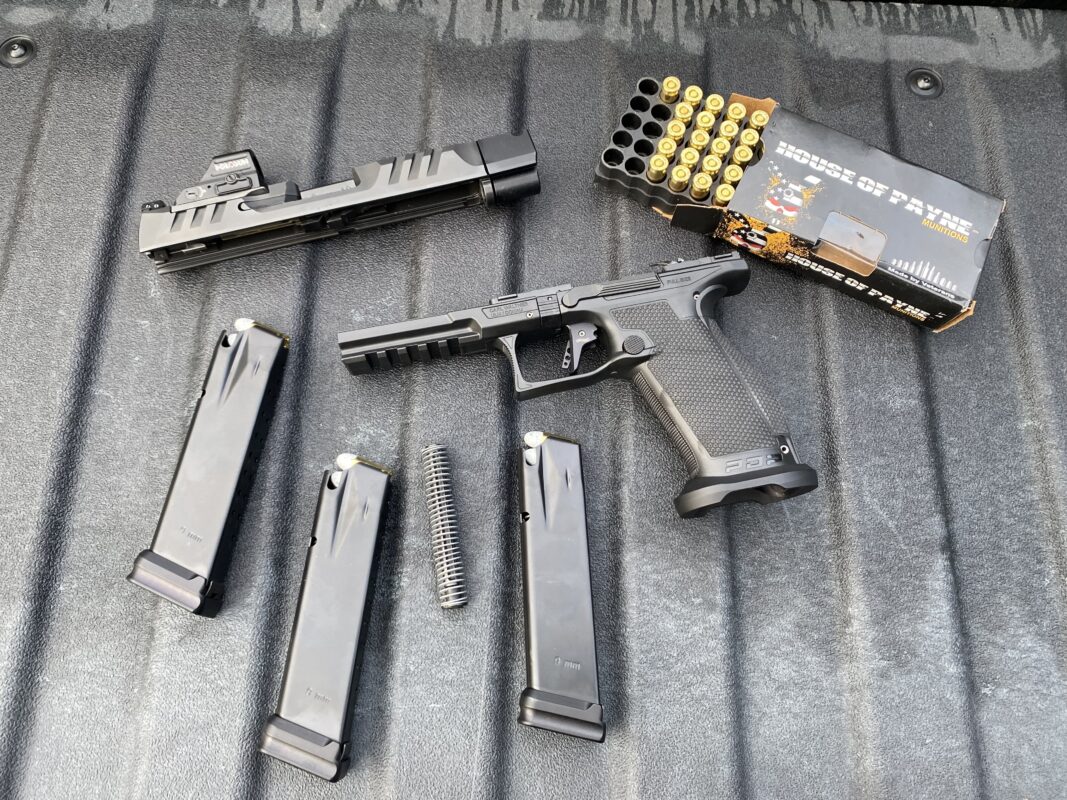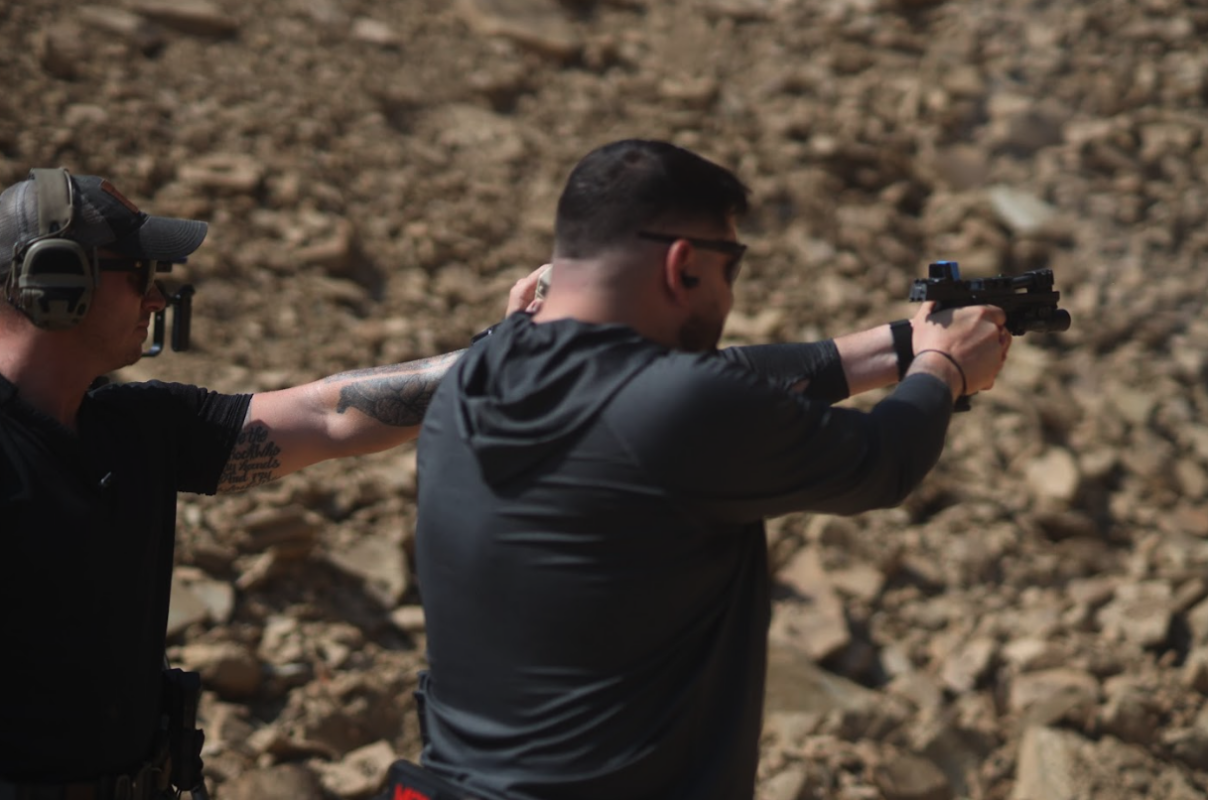HOP Blog
Choosing the Best 9mm Ammo for Compensated Pistols
Struggling to control recoil and muzzle rise with your compensated pistol? Finding the right 9mm ammo can make all the difference.
Compensators are a powerful tool for reducing recoil, but not all ammunition will give you the smooth cycling and accuracy you need.
In this guide, we’ll break down the key factors in choosing 9mm ammo that maximizes your compensator’s effectiveness—whether you’re training, competing, or carrying for personal defense.
With expert insights and practical tips, you’ll learn how to pick the best ammo for consistent performance, less maintenance, and ultimate reliability.
Understanding Pistol Compensators and How They Work
Compensators are devices attached to the muzzle of a pistol to redirect gases upward, counteracting the muzzle’s upward movement during firing. This redirection helps control recoil and muzzle rise, enabling shooters to maintain target alignment for quicker follow-up shots. Compensators are becoming more popular, not just among competition shooters but also for personal defense and general range use.
However, the type of ammunition used can affect a compensator’s effectiveness. Different bullet weights, pressures, and designs interact uniquely with a compensator, impacting its ability to reduce recoil and muzzle rise effectively.
Generally, ammunition with a higher grain weight and pressure, such as 124-grain +P or 147-grain rounds, tend to activate the compensator more effectively than lighter rounds like 115-grain. Selecting the right ammunition for your compensated pistol enhances performance and can prevent issues such as residue buildup, which can affect reliability and require extensive cleaning.

Choosing the Ideal 9mm Ammo for Compensated Pistols
When it comes to finding the best 9mm ammo for a compensated pistol, a few key considerations come into play: grain weight, pressure, and bullet design. Each factor influences a compensator’s performance and can make a noticeable difference in felt recoil and muzzle rise.
- Grain Weight: Higher grain weights, such as 124-grain and 147-grain, provide additional recoil energy that enhances the compensator’s performance. Many shooters find that 124-grain is the “sweet spot” for compensators, striking a good balance between recoil control and manageable cycling. While 115-grain ammo can work with compensators, it often lacks the recoil energy needed to fully activate the compensator’s effects.
- Pressure Levels (+P and +P+ Ammo): For those seeking optimal performance, +P (overpressure) ammunition can be a game-changer. The added pressure creates more gas flow, allowing the compensator to work more effectively. However, it’s essential to ensure that the pistol and the compensator are rated for +P ammo to avoid excess wear.
- Bullet Design: Choosing the right bullet design is essential, and HOP Munitions’ 147-grain poly-coated ammo offers several advantages, particularly for compensated pistols. Unlike traditional FMJ rounds with exposed lead bases, HOP Munitions’ poly-coated bullets prevent lead buildup by completely encasing the projectile. This keeps the compensator cleaner and minimizes the need for extensive maintenance between shooting sessions.
Rick Crawley of Achilles Heel Tactical, a prominent firearms instructor, relies on HOP Munitions’ 147-grain poly-coated ammo in his compensated Walther PDP. This choice reflects his trust in HOP Munitions’ consistency and quality, particularly in demanding environments. The 147-grain poly-coated rounds provide an ideal balance of recoil control and cycling reliability, essential for the high-volume shooting demands of his courses.

HOP Munitions’ poly ammo also brings a unique advantage for competitive shooters. Recently approved by the USPSA, it bypasses the usual pre-event testing process that competitors face, offering hassle-free access to events. With the uncertainty of ammo testing removed, competitive shooters using HOP’s poly ammo avoid the risk of disqualification, saving time and resources—a benefit especially valuable for those traveling to major events.
Overall, the combination of 124-grain or 147-grain +P JHP ammo tends to yield the best performance in compensated pistols, reducing recoil and simplifying cleaning.
Testing and Adjusting for Reliability
It’s essential to understand that adding a compensator may require experimenting with different recoil spring weights and ammunition to ensure your pistol cycles reliably. Compensators change the dynamics of a pistol’s operation, sometimes demanding adjustments for flawless function.
For example, when using my Parker Mountain Machine compensated Walther PDP Pro-X with an 18lb stock spring, I noticed that my preferred 147-grain ammo didn’t generate enough gas to fully cycle the slide. This issue led to short cycling, where the slide failed to return completely, impacting reliability. By swapping out the 18lb spring for a 15lb spring, the pistol cycled perfectly, and I achieved the desired balance between recoil reduction and dependable performance.

This testing process is crucial, especially for those planning to carry a compensated pistol for personal defense. The right combination of spring weight and ammunition can significantly impact performance and reliability, making it vital to spend time at the range testing with your preferred ammo. Testing different spring weights, such as shifting to a lighter spring with 124-grain +P or heavier 147-grain rounds, helps maximize the compensator’s benefits without compromising the pistol’s cycling.
Conclusion
Selecting the best 9mm ammo for a compensated pistol involves balancing performance, reliability, and maintenance needs. For daily carry or duty use, jacketed hollow points (JHP) are a solid choice, providing reliable expansion and minimal residue in the compensator.
Meanwhile, HOP Munitions’ 147-grain poly-coated ammo is an excellent option for training and practice, offering clean operation and reduced fouling, which helps maintain consistent performance during high-volume shooting sessions.
By testing different combinations of grain weights, pressures, and bullet designs, you can find the ideal setup for your compensated pistol—ensuring reliable cycling and effective recoil management for both duty and practice.

